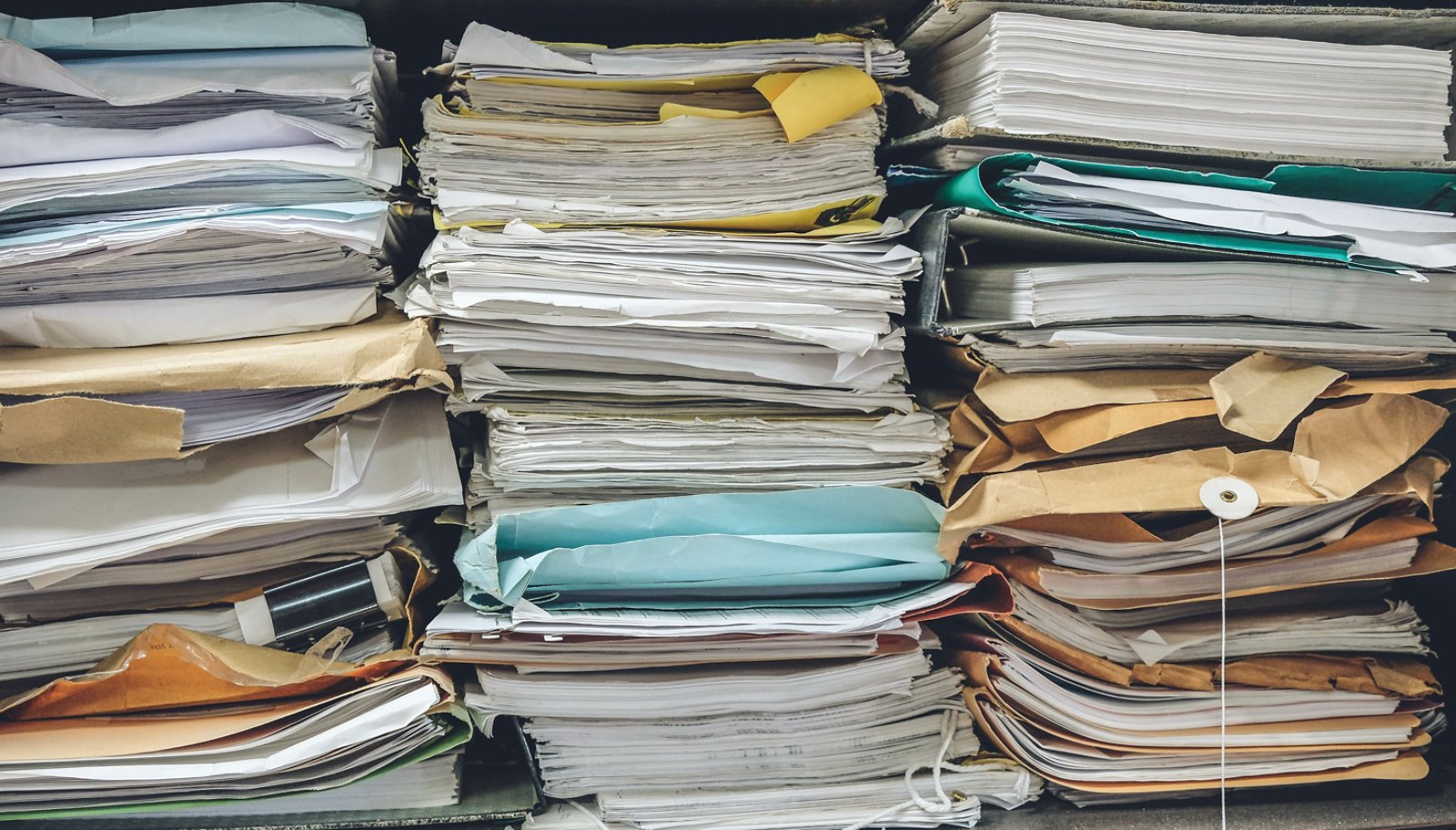紙への依存と、コストおよび失業に対する誤解によって遅れをとっている公共事業におけるデジタル化
On a recent visit to a customer in the public sector, the conversation turned to the topic of paper. The team we spoke with admitted that their facilities housed the equivalent of 15 football fields worth of documents.
Can you picture it? I’d guess if you can, you probably work within the state and local government and education (SLED) market.
In a world of mobile boarding passes, telehealth, and ChatGPT, it’s no great secret that the public sector has fallen behind in the push toward digitalization. Paper-intensive SLED agencies are notorious for and hindered by robust, physical archives.
At least part of the hesitation to start a paper-to-digital journey are some persistent myths that I’d like to dispel.
Myth 1: Paper is best practice
That paper records have long been the lifeblood of the public sector is unsurprising. These physical archives once were the only means to maintain data about the people, places, and things that comprise our society—from tax filings and land deeds to environmental statistics and police reports.
Paper-first might once have been the best practice. Today, however, paper records present a growing threat to security, to progress in improving citizen service experiences, and to the data contained in the documents themselves.
Many paper archives are stored in poorly-maintained facilities, vulnerable to everything from an innocent misfiling or spot of mildew to something as dramatic as a fire or a flood. Relying on a physical location and a manual filing system to maintain these sensitive records makes them vulnerable to unauthorized access. All it takes is a door left ajar or a key misplaced.
At the same time, the lack of a digital copy of these records presents significant challenges for authorized individuals looking to access this data and utilize it for reference, planning, or insights critical to optimizing value delivery to citizens. This is particularly true as employees across industries continue to migrate to more work-from-home and hybrid models.
In short, for many agencies and organizations still reliant on their paper records, the risks of not digitalizing are far greater than the challenges posed by the digitalization process itself.
Paper records present a growing threat to security, to progress in improving citizen service experiences, and to the data contained in the documents themselves.
Myth 2: You’ll never convince all stakeholders
To get all stakeholders involved in this journey on the same page, it helps to explain the “how” of it all. In other words, how is it possible to take those 4.5 million documents from the past 50 years and turn them into a tidy digital record?
The process begins by moving the archive to a nearby scanning facility. (During the scanning process, your digitalization service provider should be able to ensure that your records are made available for your team’s reference via the phone.)
Then, once your archive has been digitalized, the real journey begins. (That same service provider should also be able to guarantee a secure destruction or a safe return of documents after the scanning is complete.) Suddenly, all that data locked up in those paper files becomes available to dynamic analytics tools, the results of which can be leveraged to enrich new insights, all while vastly reducing the cost of storage and maintenance.
Of course, even if you’re able to clarify the ins and outs of the process itself, some record-keeping staff may still fear the change—no matter how clear the benefits. Managers of these paper filing systems have often dedicated their careers to the organization and maintenance of their school, government, or agency records. The paper trail is their legacy. It’s entirely natural that this group may harbor concerns about the security of paper records during the digitalization process, and the future of their role after their organization goes digital.
To overcome this challenge, we encourage our customers to clearly communicate the benefits of digitalization as well as the need for change. Here are some notes to hit:
- Emphasize the benefits of digitalization, such as increased efficiency, improved accuracy, cost savings, and enhanced security, to help convince stakeholders of the importance of the change.
- Address any concerns that stakeholders may have, such as the cost of implementation, the learning curve for new technology, or the loss of jobs, and provide clear and convincing solutions.
- Provide training and support to help stakeholders understand the new technology and how it will improve processes and outcomes.
- Involve stakeholders in the process from planning to implementation. This can help build buy-in and ensure that the chosen solution meets the needs of all stakeholders.
- Demonstrate the results of digitalization in other government organizations or similar industries to show that it can be successful and that the benefits are real.
In other words, it's important to show these critical stakeholders that while you understand that this may be a big change, there is no reason to worry when best-practices are implemented. Show that instead, by making this change, everyone will be able to do their jobs better and more efficiently, which will ultimately benefit everyone in the organization—even, or especially, them.
By making this change, everyone will be able to do their jobs better and more efficiently.
Myth 3: The cost of digitalizing records far outweighs the gains
As with any modernization journey, paper-to-digital comes at a price. For any forward-thinking organization, however, initial investment should always be viewed through the lens of future outcomes. Or alternatively: of future losses. (Remember those fires and floods.)
Think also about those decades of statistics and information locked up in that paper record—entirely out of band from your CIO and CTO’s purview. As a digital document, suddenly, that data can be made accessible to a suite of new technologies and tools. It can be utilized across Microsoft’s Power Platform to produce low-code and no-code solutions and fed into machine learning and AI systems to produce in-depth insights and predictive solutions.
To sum up: The paper-to-digital process is about more than just digitalizing physical records. It’s about enabling customers to get more out of the data already available and establishing a more sustainable and prosperous working model for years to come.
Roger Boone is the Director of Government Solutions (Enterprise Architecture) at Kyndryl.




